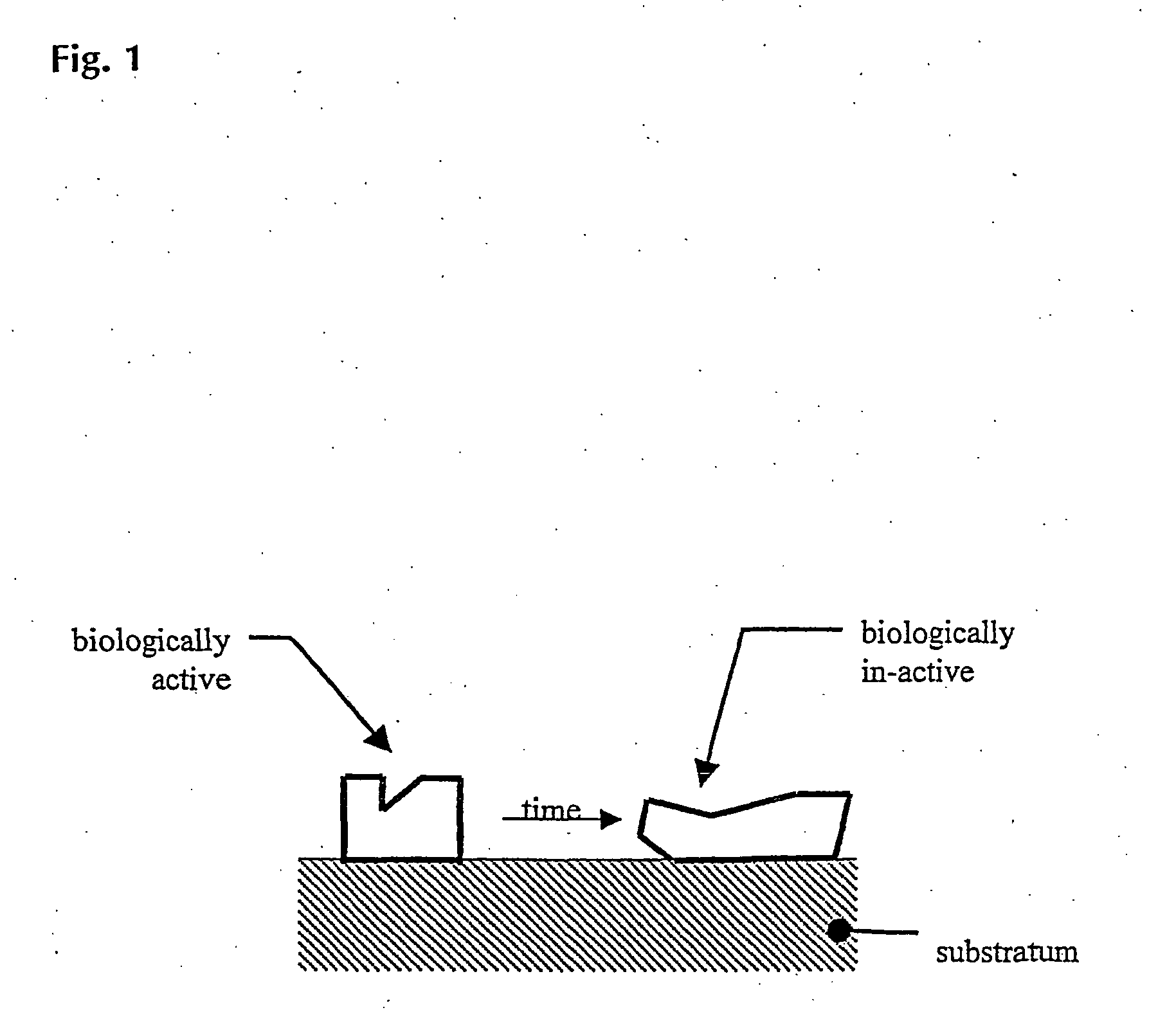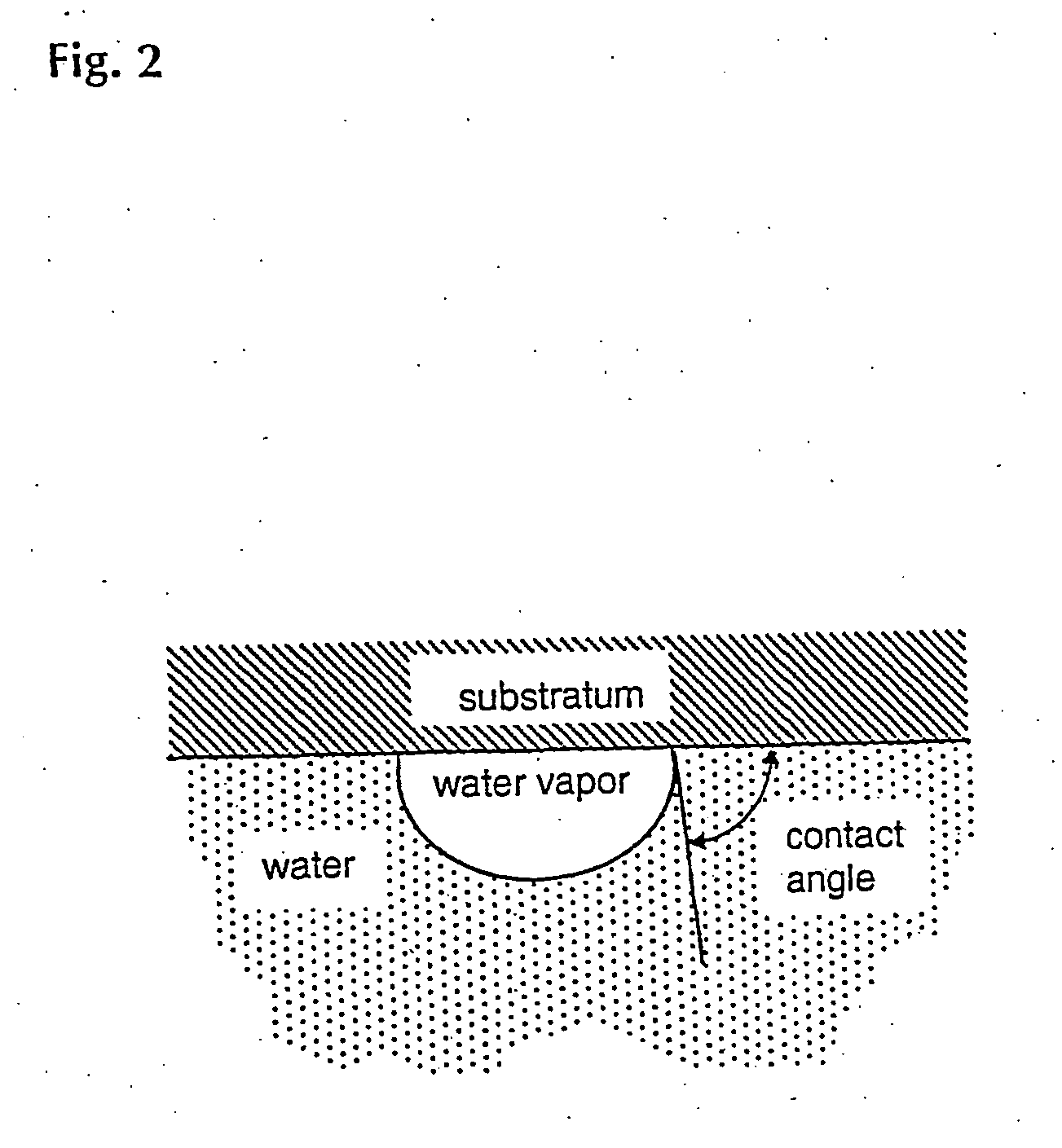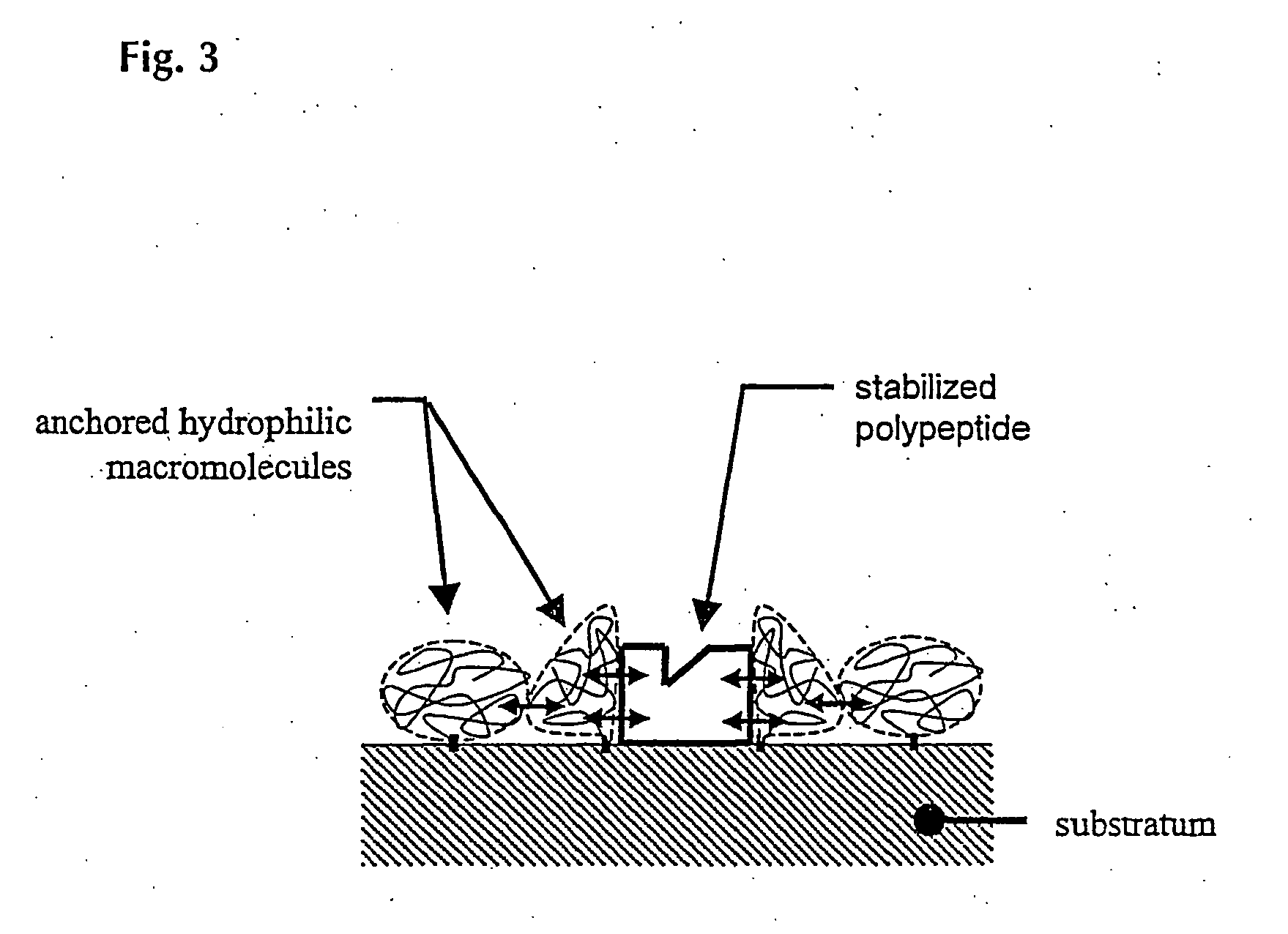Biocompatible materials
a biocompatible and material technology, applied in the field of biomaterials, can solve the problems of insufficient immobilization of tissue cells, often incompatible materials, and insufficient synthetic polymers in current use, e.g. polysulfones, polyesters or polypropylenes,
- Summary
- Abstract
- Description
- Claims
- Application Information
AI Technical Summary
Benefits of technology
Problems solved by technology
Method used
Image
Examples
second embodiment
In one embodiment, the matrix is formed of polymer fibers having a particular desired shape, that is implanted subcutaneously. The implant is retrieved surgically, then one or more defined cell types distributed onto and, into the fibers. In a second embodiment, the matrix is seeded with cells of a defined type, implanted until fibrous tissue has grown into the matrix, then the matrix removed, optionally cultured further in vitro, then reimplanted at a desired site.
The resulting structures are dictated by the matrix construction, including architecture, porosity (% void volume and pore diameter), polymer nature including composition, crystallinity, molecular weight, and degradability, hydrophobicity, and the inclusion of other biologically active molecules.
This methodology is particularly well suited for the construction of valves and tubular structures. Examples of valves are heart valves and valves of the type used for ventricular shunts for treatment of hydrocephaly. A similar...
example 1
Synthesis of α-4-azidobenzoyl ω-methoxy poly(ethylene glycol)s (ABMPEG)
The synthesis of photo-reactive ABMPEG 5 kDa is described. ABMPEG of different MWs (2, 5, and 10 kDa) were employed as modifying agents in all following examples, all being synthesized as described in this example.
1. Procedure
4-Azidobenzoic acid is prepared from 4-aminobenzoic-acid which is diazotized with sodium nitrate.[39,40] The carboxylic acid is converted into the 4-azido benzoyl chloride with thionyl chloride.[39,40]0.23 g (1.875 mmol) of dimethylaminopyridine (DMAP) in 10 ml dry methylene chloride is mixed with 0.17 ml (1.250 mmol) triethylamine (TEA). The solution is transferred into a 250 ml three neck roundbottom flask. After cooling down to 0° C., 0.57 g (3.125 mmol) 4-azido benzoyl chloride in 10 ml CH2Cl2 is added forming a yellow dispersion. 6.25 g (1.5 mmol) MPEG 5 kDa in 50 ml dry CH2Cl2 is added dropwise during 1 hour under dry nitrogen, after which the temperature is allowed to rise to r...
example 2
Adsorption Characteristics / Kinetics of ABMPEG 5 kDa and MPEG 5 kDa to a Polysulfone Surface Monitored by Ellipsometry
Ellipsometry is a very sensitive technique for the determination of adsorption kinetics to optically smooth surfaces. For better resolution, transparent polysulfone (PSf) films were spin-coated onto polished silicon wafers, and thus the reflecting properties of the underlying silicon were exploited
1. Preparation of PSf Surfaces
Hydrophilic silicon slides: Silica surfaces are prepared from polished silicon wafers which are thermally oxidized in pure and saturated oxygen followed by annealing and cooling under argon flow to yield an oxide layer of about 30 nm. Wafers are cut into rectangular slides (10-14 mm×20-30 mm), thoroughly cleaned with detergent, etched for 15 min in a freshly mixed 3:1 (v:v) sulfuric acid (96%): hydrogen peroxide (30%) solution, thoroughly rinsed, stabilized for 2 hours and rinsed again with / in ultrapure water. Slides are dried free of dus...
PUM
| Property | Measurement | Unit |
|---|---|---|
| contact angle | aaaaa | aaaaa |
| contact angle | aaaaa | aaaaa |
| contact angle | aaaaa | aaaaa |
Abstract
Description
Claims
Application Information
 Login to View More
Login to View More - R&D
- Intellectual Property
- Life Sciences
- Materials
- Tech Scout
- Unparalleled Data Quality
- Higher Quality Content
- 60% Fewer Hallucinations
Browse by: Latest US Patents, China's latest patents, Technical Efficacy Thesaurus, Application Domain, Technology Topic, Popular Technical Reports.
© 2025 PatSnap. All rights reserved.Legal|Privacy policy|Modern Slavery Act Transparency Statement|Sitemap|About US| Contact US: help@patsnap.com



